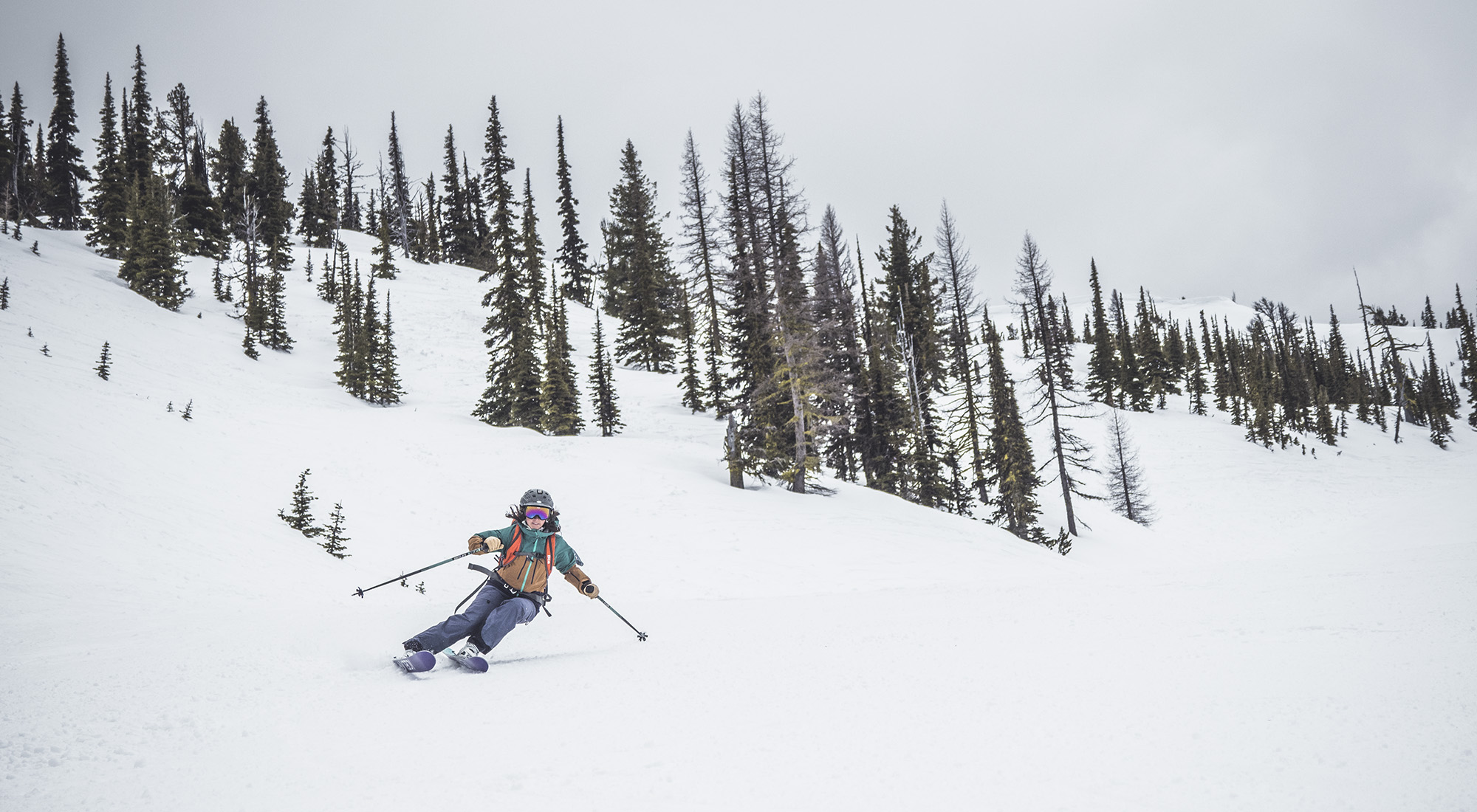Skis have changed immensely over the last 150 years. Here’s a look back—and a glimpse at what’s coming next.
Ski technology these days seems to move at lightning speed—just when you’ve gotten a new pair of skis, some fancy, new technology hits the market to rave reviews. It’s hard to keep up. But when you see where skis have come from, you’ll learn that, in fact, they’ve been constantly evolving since the beginning. Over the past few decades, innovations in shape and materials have literally changed the way we slide down snow. Here’s where skis started, the biggest innovations in skiing’s history, and a preview of what’s next for the future of ski technology.
8,000 BC: The earliest records of people gliding on snow date as far back as possibly 10,000 years ago in Altai, China, where cave drawings showed ancient hunters using something resembling skis. The Russians and Scandinavians were among the early adopters of ski transportation, too, with Norwegian hunters and farmers using skis through the Middle Ages.
1850: Wood carvers in Telemark, Norway, built the first bow-shaped cambered skis, meaning they curved upward underfoot to allow for easier maneuverability. Historians credit a farm laborer from Norway named Sondre Norheim with building the first binding with a heel strap as well as the original telemark ski, which was about 8 feet long and made from pine wood.
1926: Austrian accountant and skier Rudolf Lettner developed the first ski with metal edges after a slide-for-life incident nearly killed him. It took him a decade to figure out how to attach the metal edges to wooden skis. “Metal edges held better on hard snow and ice, and they made skis stiffer and less likely to break,” says Lowell Skoog, a Washington ski historian and co-founder of the Washington State Ski and Snowboard Museum. “All of these factors led to greater control at higher speeds.”

Swiss engineer Guido Reuge invented the first spring-loaded cable binding in 1928 to enable skiers to lock down their heel on the descent. He called it the Kandahar binding. It was nicknamed “the bear trap” because it didn’t release easily. (Photo Courtesy: Swiss Ski Museum)
1928: Swiss skier and engineer Guido Reuge invented the Kandahar cable binding with a coiled spring to lock down the heel for more control. The only problem? The binding didn’t release when a skier fell. “Cable bindings replaced straps of leather or wicker to produce a more rigid and durable attachment to the ski, improving control,” says Skoog. A decade later, competitive skier Hjalmar Hvam patented the first quick-release bindings in Portland, Oregon, after breaking his leg skiing on Mount Hood.
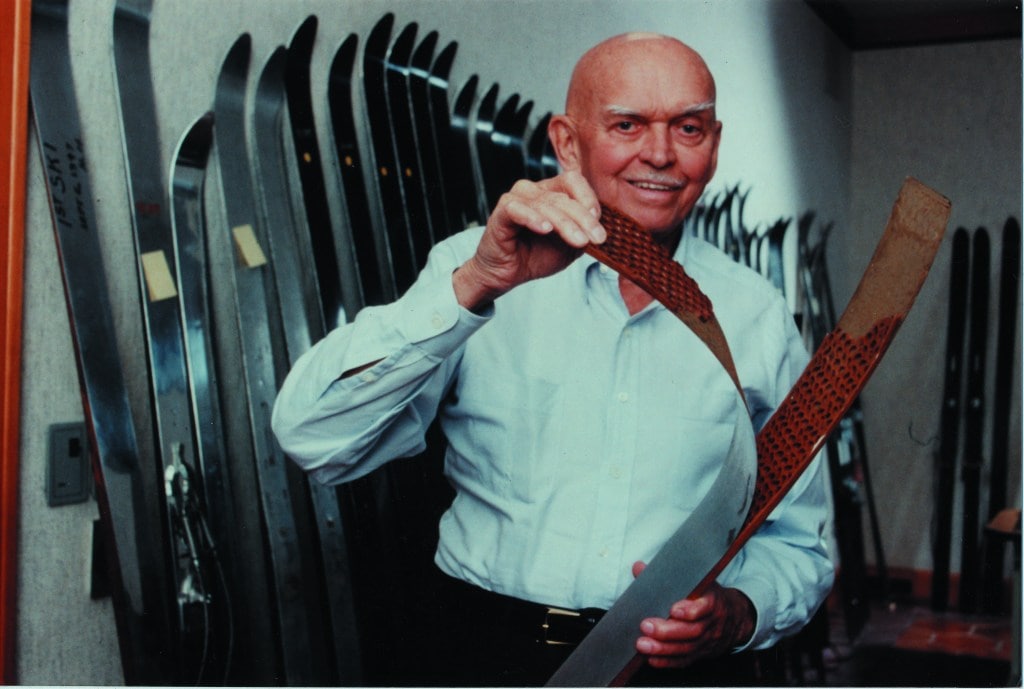
In 1947, aircraft engineer Howard Head built the ski industry’s first aluminum-laminate skis, called the Head Standard. (Photo Courtesy: Head)
1947: While early prototypes of the first aluminum skis were made in France, American aeronautical engineer Howard Head dreamed up the first commercially viable aluminum-laminate skis, called the Head Standard, after a frustrating day trying to learn to ski on wooden planks. He built the skis with earnings from his poker games and launched his company, Head Skis, shortly thereafter. “After that, wooden skis were set aside,” says Dan Gilbert, assistant category merchant for downhill skiing at REI. “Metal skis were stronger and more precise in their construction, so manufacturers could experiment with different flex patterns to see what worked better.”

The K2 Holiday, which debuted in 1962, was one of the first fiberglass skis to make it big on the market. Retail price? $79.50. (Photo Courtesy: K2)
1959: Fred Langendorf and Art Molnar marketed an early-model fiberglass ski in Montreal under the brand name Toni Sailer. By the mid ’60s, fiberglass was replacing wood and aluminum as the main material in skis. In 1962, Bill Kirschner created a fiberglass ski called the Holiday through his company K2 Corporation on Vashon Island, Washington. “At this point, metal skis disappeared,” says Gilbert. “Fiberglass skis were lighter, more responsive, and quicker turning.”
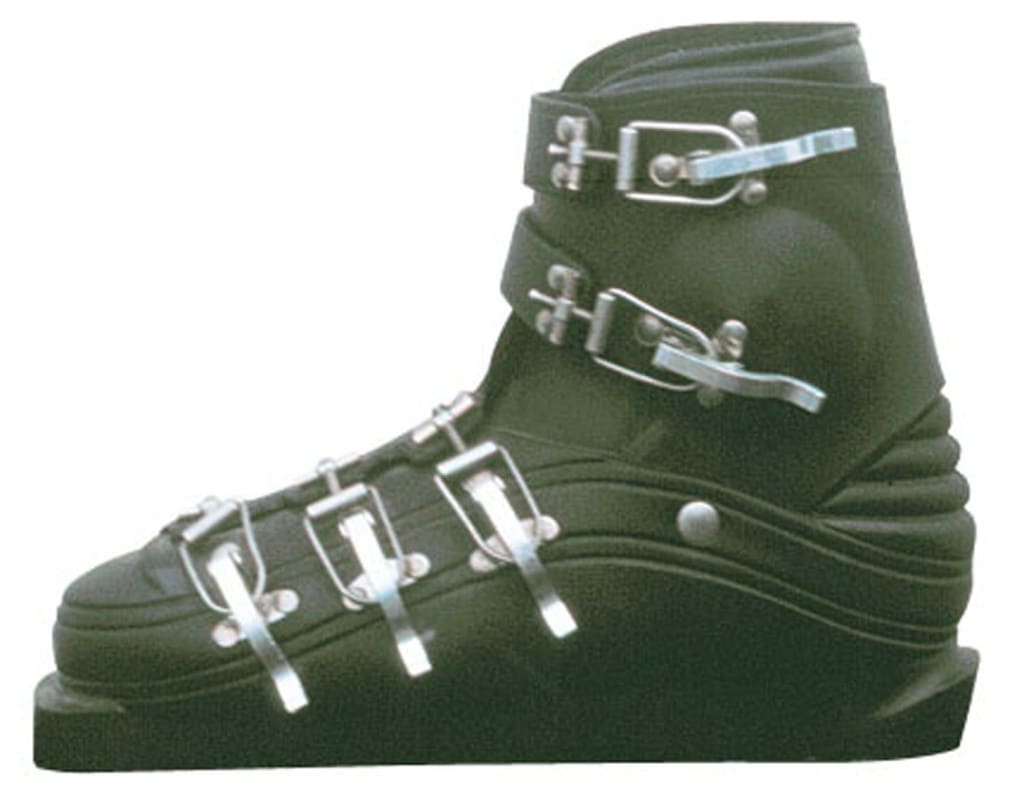
Plastic ski boots debuted for the first time in the 1960s, revolutionized by American Bob Lange and his company, Lange Boots. (Photo Courtesy: Lange Boots)
1965: In REI’s 1965 catalog, Lange’s plastic ski boots appeared for the first time. They were described as “light, waterproof, virtually indestructible.” European bootmakers had been dabbling with adding plastic to the outside of leather ski boots for increased waterproofing, but Americans Bob Lange and David Luensmann really popularized the first plastic boot shell. “Lange nailed it first. Plastic increased durability and hugely upped the game in performance,” says Gilbert.
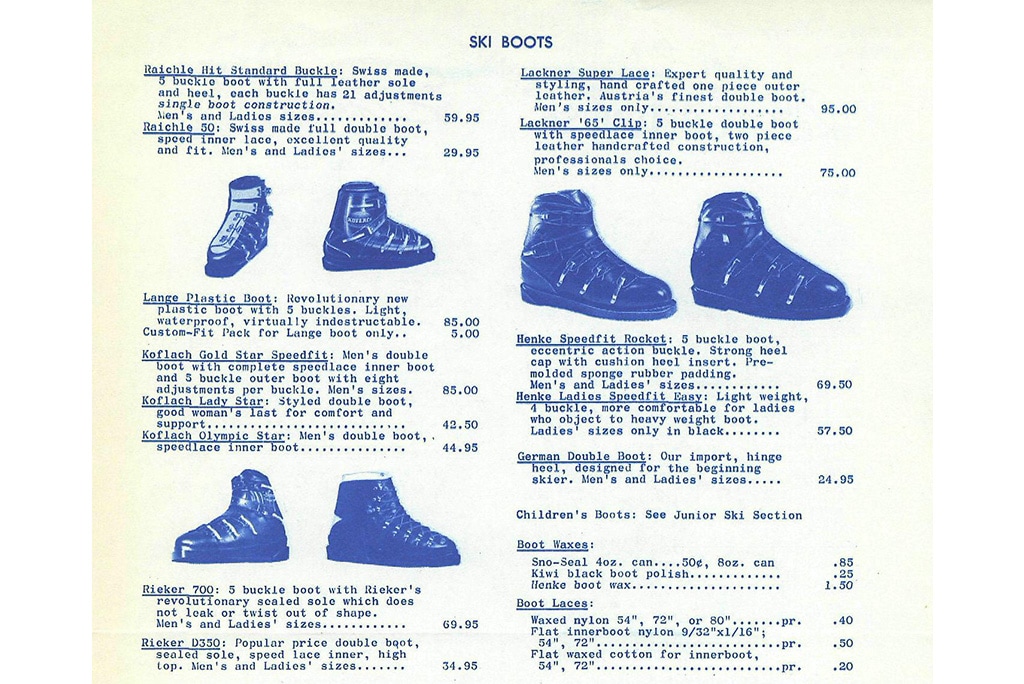
In the REI 1965-66 Winter Catalog, Lange’s plastic ski boots were listed at $85.
1965: A surfer named Sherman Poppen builds a surfboard for snow made out of two kids’ skis stuck together and calls it a Snurfer. A decade later, a 23-year-old in Vermont named Jake Burton Carpenter builds a single plywood board with no metal edges, introducing the world to a brand new sport: snowboarding.
1988: Ski company Atomic tasked one of its engineers, Rupert Huber, to come up with a better powder ski. So, Huber sawed a snowboard in half and put ski bindings on it. After some fine tuning, the production model became known as the Atomic Powder Magic. At 115 millimeters underfoot, it was the first super-wide powder ski. “This was a big deal because at the time, there were not any other fat skis,” says Jake Strassburger, alpine commercial manager for Atomic. “They made it easier to ski fluffy powder snow because they had so much more surface area underfoot. They were also much shorter than the lengths people were skiing on in that day, making them easier to maneuver.”
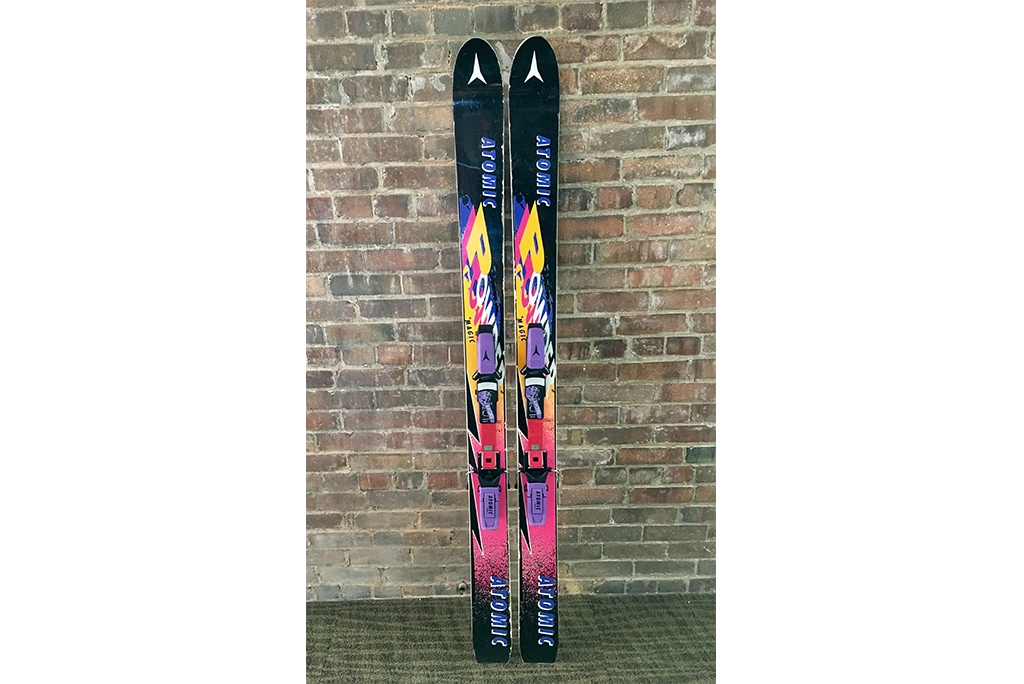
The Atomic Powder Magic, which came out in 1988, is considered one of the first fat skis built for powder. At 115 millimeters underfoot, it was drastically wider than other skis on the market. (Photo Courtesy: Atomic)
1990: Olin engineer Frank Meatto started designing skis with radical sidecut—essentially giving skis an hourglass-like shape—in the 1980s. By 1990, Elan trademarked the term “parabolic” with the release of their SideCut eXtreme, or SCX, the first shaped skis designed to making carving easier. “Shaped skis marked a dramatic shift that made it possible for every type of skier to carve,” says Gilbert. “Elan captured the market the first couple of years, then everyone jumped on the bandwagon.”

The Salomon Teneighty, which came out in 1997, was among the first twin-tip skis on the market. (Photo Courtesy: Salomon)
1997: The godfather of freeskiing, Mike Douglas, had an idea for a twin-tip ski, with turned-up tips and tails to enable skiers to pull off the same tricks snowboarders were doing. He made a promo video and sent it around to various ski companies. Salomon called and together, they created the Salomon Teneighty, considered one of the first twin-tip skis. “Everyone was just blown away. They were like, ‘What is that ski? We’ve never seen anything like that,’” Douglas recalls. “We were literally learning new tricks every day, and we were able to do a lot of things we’d only thought about but now we had a ski we could do it on.”
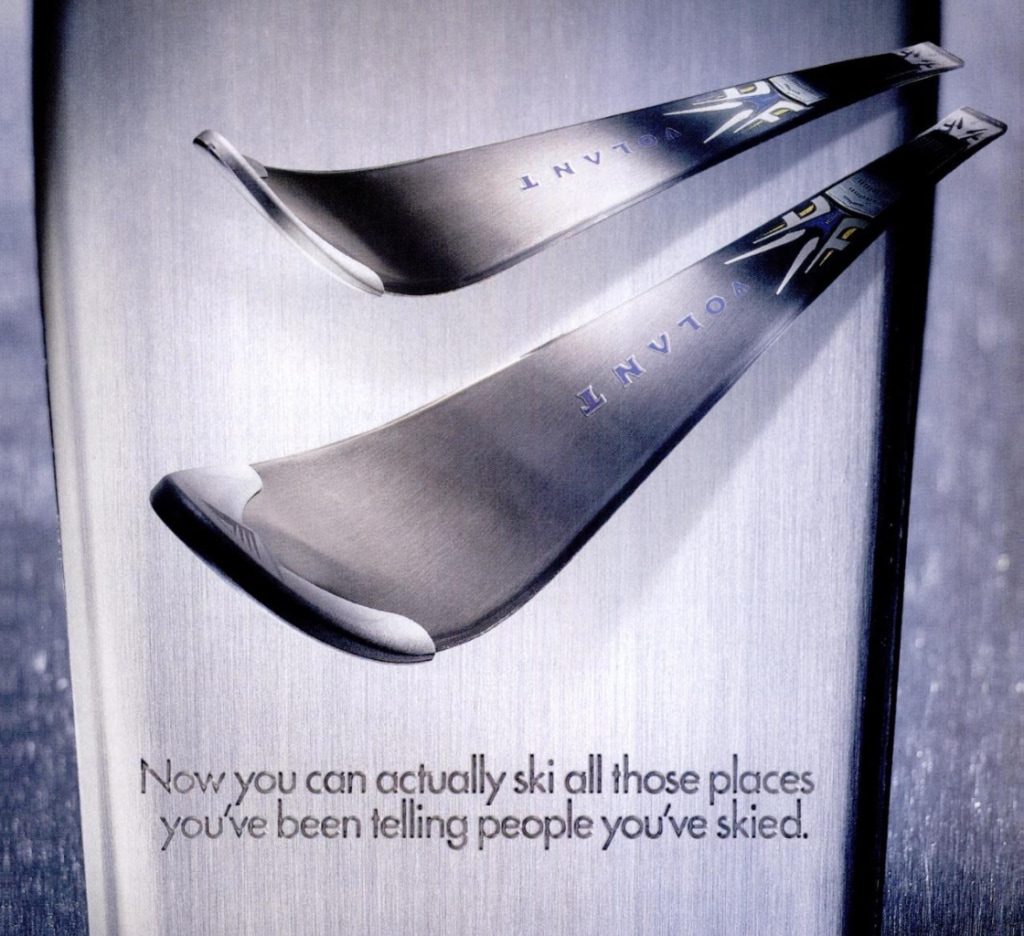
Volant Skis’ wide, metal skis in the late 1990s were among some of the first skis built for floating powder. This is a Volant ad from Skiing Magazine in 1998. Two years later, the company debuted the radically shaped Spatula. (Photo Courtesy: Skiing Magazine)
2001: Visionary skier Shane McConkey worked with Volant engineer Peter Turner to make the Spatula, the first ski with reverse sidecut and reverse camber, or rocker, as we call it now, inspired by the shape of water skis. Stephan Drake and Swiss partner Cyrille Boinay launched DB Skis in 2003 (which later became DPS Skis) and introduced early carbon-fiber skis and the word “rocker,” with the Tabla Rasa ski, to ski terminology. By 2006, rockered skis like the K2 Pontoon and the Armada ARG became cult favorites.
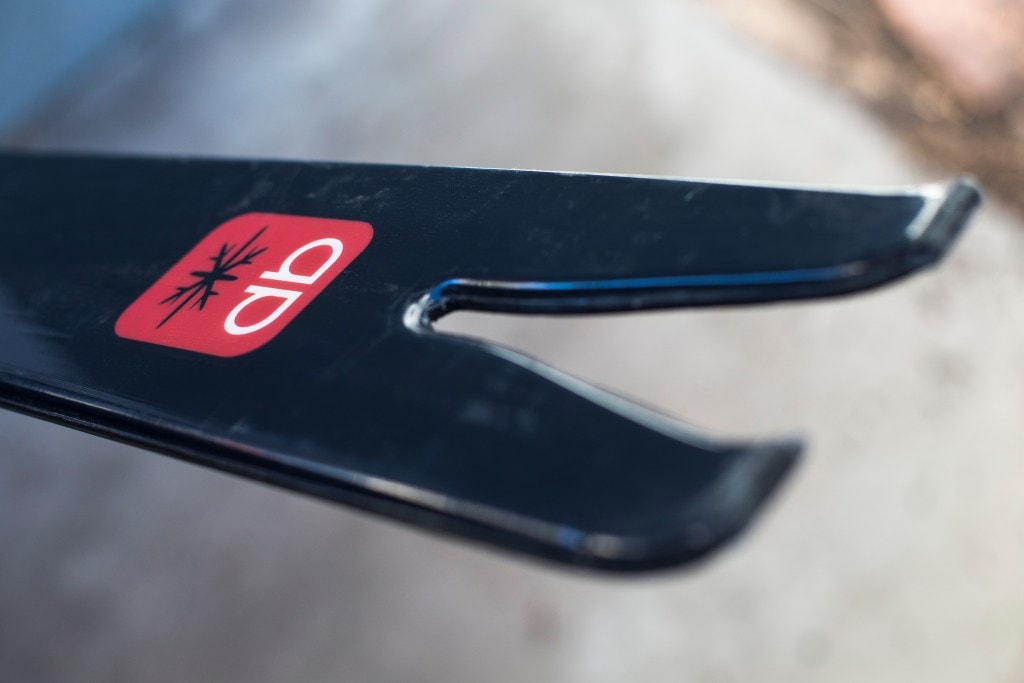
The original ski from DB Skis, which later became DPS Skis, was called the Tabla Rasa. It launched in 2003 and had one of the industry’s first rockered tips and a radical-looking swallowtail. (Photo Courtesy: DPS Skis)
2008: Rossignol introduced the S7, which blended rocker and reverse sidecut, and took rockered skis mainstream. They became the first rockered skis that could also handle run-outs on hardpack. “Rossignol came out with that ski and it was like an aha moment,” says Gilbert. “That ski had huge commercial success.” By 2011, every ski in K2’s line featured rocker.
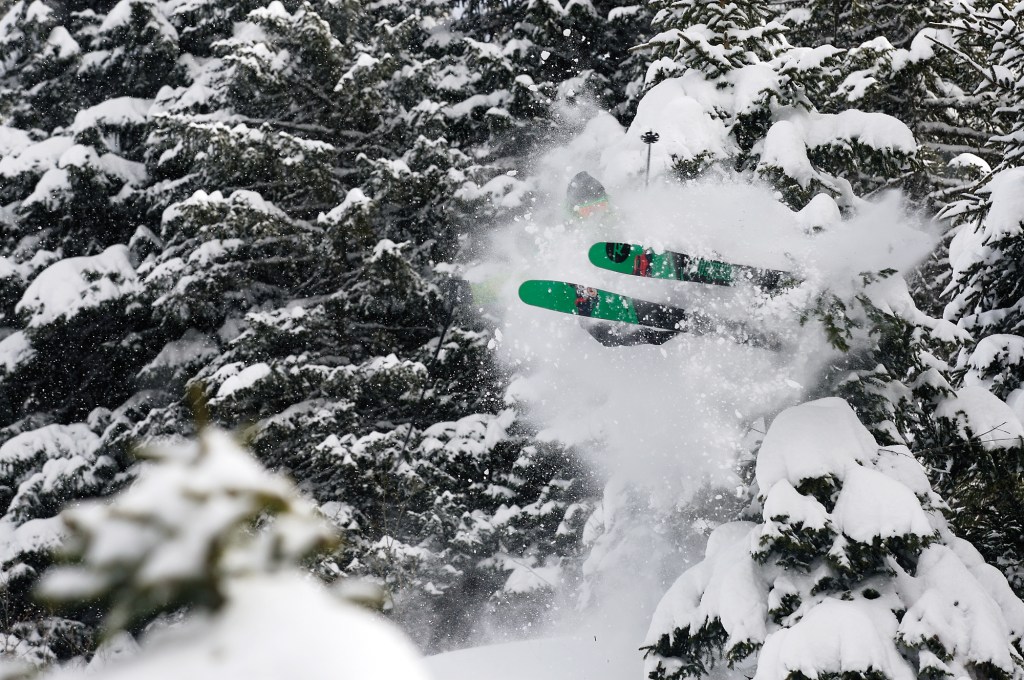
Rossignol launched the top-selling S7 ski in 2008—it blended rocker with reverse sidecut for a truly skiable, all-mountain rockered ski. (Photo Courtesy: Rossignol)
The future: So what’s next for skis? “We’re not likely going to see much in the way of major changes in shape, at least for now,” says Gilbert. “The next thing that’s out there: weight, making lighter skis that actually ski well. The age-old method of using two sheets of metal in skis is changing. Companies are taking the metal out of skis and using carbon fiber and other materials to keep skis stiff but lighter.”
